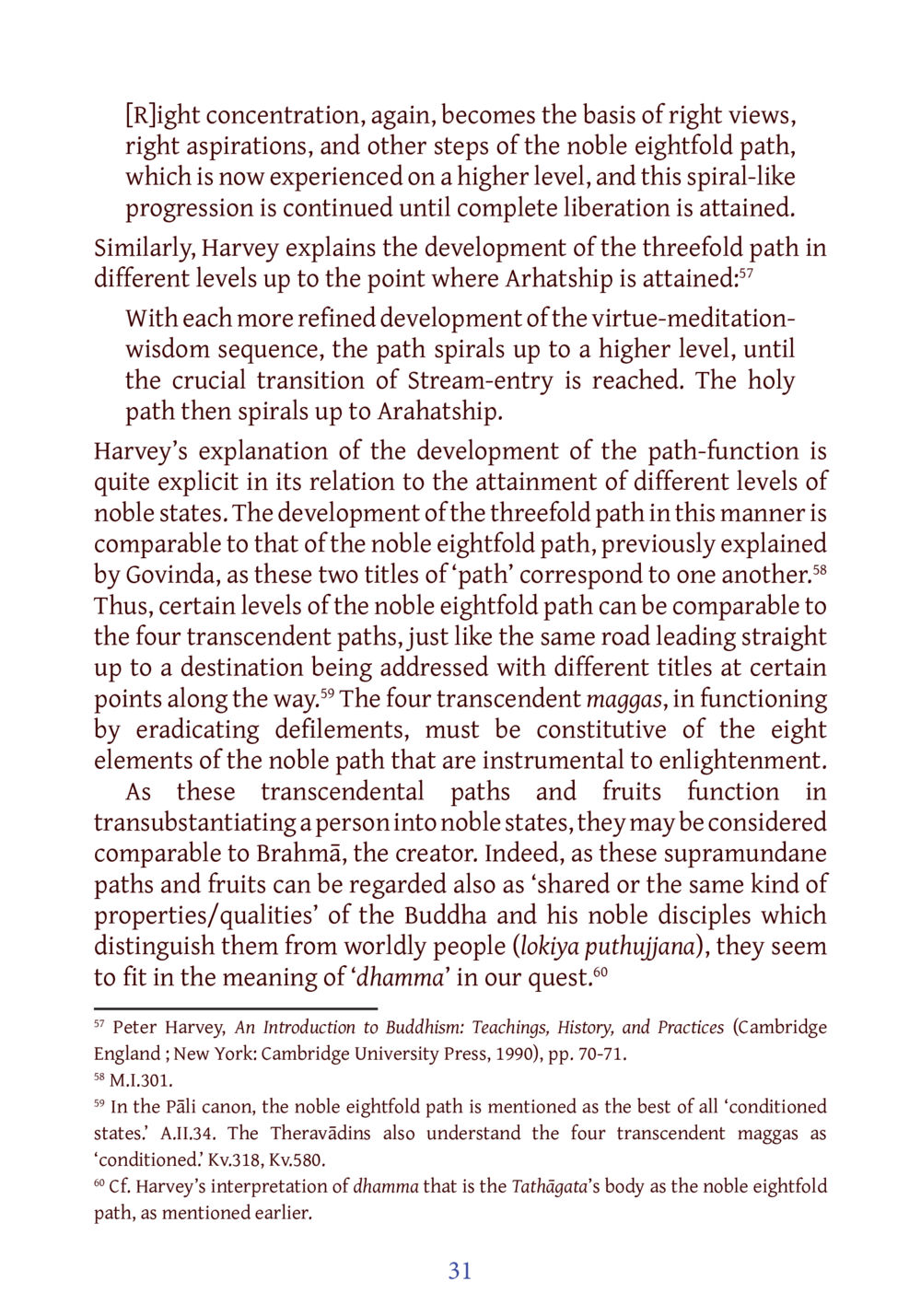Understanding the Noble Eightfold Path and Threefold Path in Buddhism : หน้า 52/141
DIRI Journal : หน้า 52/141 Explore the concepts of the Noble Eightfold Path and Threefold Path in Buddhism, and their significance in achieving enlightenment.
4 ครั้ง

สรุปเนื้อหา
This text elaborates on the interrelationship between Right Concentration, Right Views, and Right Aspirations as pivotal elements of the Noble Eightfold Path leading to liberation. It discusses the spiral progression toward higher levels of spiritual attainment, specifically highlighting the transitions between various stages culminating in Arhatship. Peter Harvey's insights shed light on the development of virtue, meditation, and wisdom, illustrating how these translate into noble states comparable to the Four Transcendent Paths. Additionally, the text aligns these conceptions with the broader understanding of dhamma, emphasizing the characteristics that differentiate enlightened beings from ordinary individuals. Overall, the discussion unveils a structured approach to spiritual growth in Buddhism, crucial for understanding the path toward enlightenment without the influence of worldly distractions.
หัวข้อประเด็น
-Noble Eightfold Path
-Threefold Path
-Right Concentration
-Enlightenment
-Arhatship
-Buddhist teachings
ข้อความต้นฉบับในหน้า
หน้าหนังสือทั้งหมด













































































































































